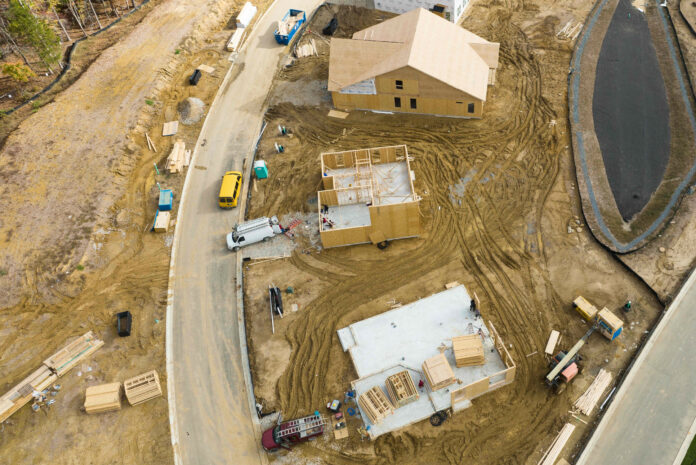Building of new homes fell last month for the first time since October, government data showed on Thursday, on the back of a plunge in single-family construction. But analysts said with buyers still looking for properties to purchase, the supply of new homes could increase this year.
Housing starts, which means new homes being built, fell by more than 4 percent in December after they sky-rocketed the previous month, pushed down by single-family home building seeing a decline of nearly 9 percent for the month.
For 2023, an estimated 1.4 million new housing units were started, a 9 percent decline from the previous year of more than 1.55 million units, the U.S. Department of Housing and Urban Development said.
Meanwhile, home building permits, which analysts say is a forward-looking indicator of future construction, rose slightly by nearly 2 percent in December, with single-family construction also jumping by 1.7 percent for the month. In 2023, this category saw nearly 1.5 million housing units receive authorization to build, an increase of nearly 12 percent.
JIM WATSON/AFP via Getty Images
“Our forecast is for housing starts to slow through the first half of this year, but the December permits data, recent declines in mortgage rates, and improving homebuilder sentiment lend an upside risk to that forecast,” Nancy Vanden Houten, lead U.S. economist at Oxford Economics, said in a note shared Newsweek. “Going forward, we think there is more upside for starts of single-family homes, where there is still a need for supply.”
Experts acknowledged that the decline in housing starts in December was a setback for the housing market but one that needed to be viewed in context. Single-family starts were still above the 1 million mark, which is “healthy” for the sector, said Danielle Hale, the chief economist at realtor.com.
“It’s on the higher end of the range than we had seen heading into the pandemic period,” Hale told Newsweek. “This is a small setback, but in general, I would say the trend for single-family starts anyway remains pretty positive.”
Low supply of homes has been a sticking point for the housing market. Housing economists point out that the U.S. is about 4 million short of homes needed to meet demand, a reality that has led to a rise in prices.
The median sale price of a home in the U.S. for the week ending January 14 was 4.2 percent higher than a year ago at a little over $362,000, according to the latest data from real-estate platform Redfin, while the asking price shot up by more than 5 percent to more than $372,000.
Mortgage rates have fallen from their peak of 8 percent from October to under 7 percent, which has helped spark activity from buyers. For the week ending January 12, the 30-year fixed rate fell to its lowest level in three weeks to 6.75 percent, sparking mortgage application to jump by 10 percent, the Mortgage Bankers Association said on Wednesday.
On Thursday, Freddie Mac pointed out that rates dropped to 6.6 percent as of January 18.
“Mortgage rates decreased this week, reaching their lowest level since May of 2023,” Sam Khater, Freddie Mac’s chief economist, said in a statement.
But rates may see some volatility through the year as economic news on inflation and consumer spending reveal strength. On Thursday, jobless claims fell to their lowest point since September 2022 in another indication that Americans are finding work and that employers are still hiring. This could be a signal that the U.S. economy continues to show resilience and that a rate cut is not needed.
The Federal Reserve hiked rates to their highest in 20 years on the back a historic rise in inflation. While inflation has slowed, it is still above the Fed’s target of 2 percent.
The expectation of rates remaining higher for the foreseeable future could mean some fluctuations in the number of new homes being constructed in 2023, Hale said.
“Housing is a very interest rate sensitive sector and we are unlikely to see stability in interest rates this year, so as investors calibrate their outlook, we’re going to see some volatility in interest rates and that’s going to be reflected in the housing market,” she said.
But as long as single-family starts stay at the 1 million range, that could bode well for the sector.
“I think that is a healthy place for them to be at given where the market is and that is going to start to help contribute to that supply deficit we’ve been talking about for years,” Hale said.
Uncommon Knowledge
Newsweek is committed to challenging conventional wisdom and finding connections in the search for common ground.
Newsweek is committed to challenging conventional wisdom and finding connections in the search for common ground.


